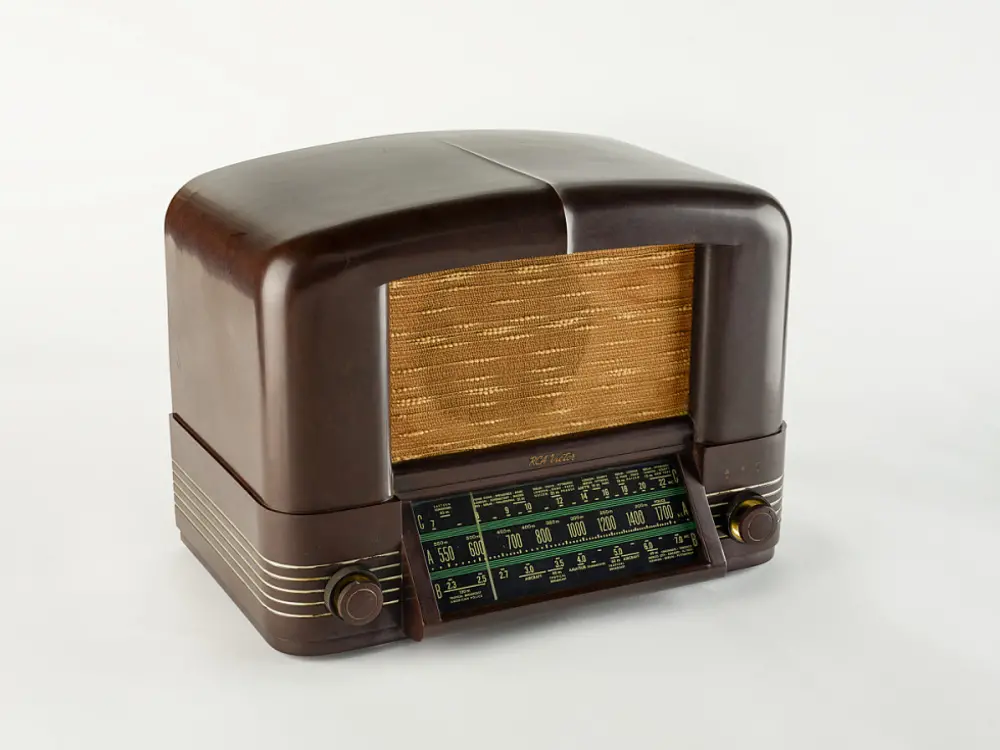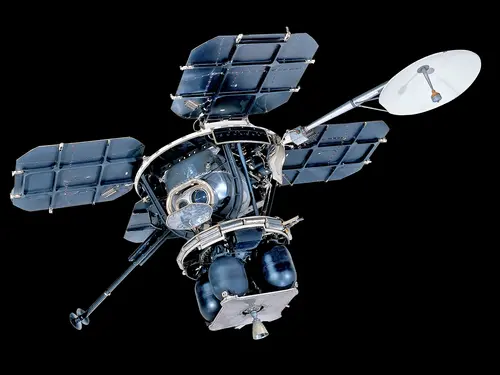
Communications Satellites
Think about the last time you sent a text, made a call, or binged through the latest season of your favorite show. Have you ever thought about the technology that put all these resources at our fingertips? Communications satellites are one such technology, and they play a major role in our daily lives.

Prior to the 1960s, long-distance communication via radio, telephone, and television networks was a challenge. Local areas often had very good coverage, and broad networks might blanket a nation, but the whole world wasn't yet covered. The existing technology—including undersea telegraph cables and radio and television receivers and reflector—had limits in reaching distant places, especially across oceans. The result: communications were slower, shorter-range, and lower quality than we're used to today.
Pictured: Before satellites sent us news and music from far away, people used shortwave radios, like this RCA model 6Q1 made in ca. 1940. They received “shortwaves” that bounced off Earth’s atmosphere. This technique was often unreliable but did allow communications with other continents.
Object Highlight
SCORE Communications Satellite
In 1958, President Dwight D. Eisenhower used SCORE—the first communication satellite—to broadcast a Christmas message: "Through this unique means I convey to you and all mankind, America's wish for peace on Earth and goodwill toward men everywhere."
The SCORE (Signal Communications by Orbital Relay Equipment) satellite operated for 35 days. It proved that satellites could receive signals from one location on Earth and immediately retransmit them to another, as well as receive a signal, store it on an onboard recorder, and then transmit on command from the ground. These technical accomplishments provided the basis for future communications satellites.
The artifact seen here is a backup payload from the Museum's collection.

Communications Satellites Close the Gaps
By the mid-1960s, communications satellites had become reliable tools. Satellites positioned in high orbits could "see" large swaths of Earth, allowing them to receive and send signals from distant places. Satellites brought radical change, filling in communication gaps and providing telephone and television connection nearly worldwide. Television could now provide hundreds of millions of people cross the globe with ground-breaking news and images. Soon the tagline "live via satellite" became a staple of TV viewing.
Pictured: An Intelsat II Communications Satellite flight spare from the Museum's collection.

A Closer Look
What are the Main Parts of a Communications Satellite?
Most communications satellites have the same basic components, pointed out in this diagram:
- Solar cells and batteries to power the satellite systems
- Antennas to receive and transmit signals
- Transponder to alter the frequency of incoming signals (avoiding interference with outgoing signals) and to amplify signals before transmitting them back to Earth
- Orientation and propulsion systems to keep the antennas pointed at Earth, and the satellite in the right orbit.
Satellites Change How We Experience Historical Moments

"Where were you when JFK was shot?"
When President John F. Kennedy was assassinated on November 22, 1963, television had already become the primary means through which events of the day were experienced. Tens of millions of Americans had a TV in their home. For generations, the question of where you were when JFK was shot has been asked—not only speaking to where you were but how you heard the news. And how did many Americans hear the news of the president's assassination and the events that followed? For most it was via communications satellites.

"That's one small step for man, one giant leap for mankind."
The Apollo 11 mission was not the first time television signals returned from the orbit of the Moon, but the landing in July 1969 was by far the most important to get just right. From 240,000 miles away, millions of people around the world needed to see this incredible moment. As astronaut Neil Armstrong stepped onto the Moon's surface, one-sixth of Earth's population watched via Intelsat satellites. The iconic images were grainy and blurred, but they changed our sense of the world and out relations with each other.

Communications Satellites Help Connect Us To Each Other
With the invention of things like airplanes and jet engines, our understanding of the planet shifted: Earth was becoming one connected planet—one global neighborhood. Communications satellites played a major role in this shift.






